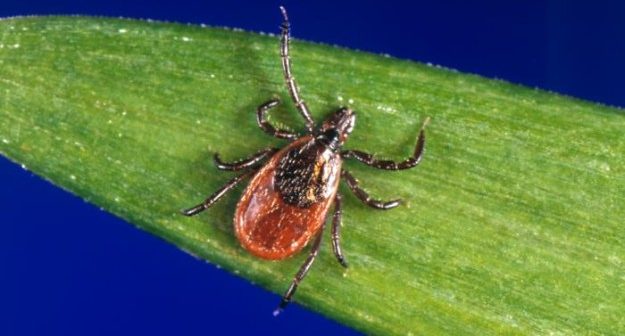With the May long week-end behind us, the outdoor season is truly in full-swing so, now is the time to learn more about Lyme disease and how to prevent it.
You may have been hearing more about Lyme disease in the news lately. The Canadian Government has been working to educate and inform us.
The following article is a reprint from the Public Heath Agency of Canada’s website…
Lyme disease is a serious illness that’s present in Canada and spreading. Canadians at risk from Lyme disease include those, who live, work and/or play in close proximity to ticks that spread the disease.
If not identified and treated early, Lyme disease can cause serious health issues. But there are simple and effective measures you can take to protect against it.
As you prepare to spend time outdoors, learn more about Lyme disease and how to prevent it.
What is Lyme disease?
Lyme DiseaseExternal site is a serious illness which can be spread by the bite of blacklegged ticks that are infected with the bacterium Borrelia burgdorferi.
In regions where blacklegged ticks are found, people can come into contact with ticks by brushing against vegetation while participating in outdoor activities, such as golfing, hiking, camping and gardening.
Risk to Canadians
While not all blacklegged ticks carry Lyme disease, populations of infected blacklegged ticks are growing. This means that the risk of contracting Lyme disease is on the rise across Canada.
Blacklegged ticks can be active throughout much of the year; however, your risk of a tick bite is highest in the spring and summer months. Take steps to reduce your risk if you spend time outdoors in areas where there may be ticks. As ticks are very small and their bites are usually painless, you may not know you’ve been bitten, so it’s important to be on the lookout for ticks and the symptoms of Lyme disease.
Where are ticks found?
Blacklegged ticks are most often found in forests and the overgrown areas between the woods and open spaces, although it’s possible to be bitten outside of these areas. The following are areas where blacklegged tick populations have been confirmed or are establishing:
Southern British Columbia
Southeastern and south-central Manitoba
Southern and eastern Ontario
Southern Quebec
Southern New Brunswick and Grand Manan Island
Parts of Nova Scotia
Ticks don’t move far by themselves but they can attach to migratory birds, and may fall off far from their original location. For this reason, it’s possible to find infected ticks in other areas than the ones listed above. Surveillance is ongoing to confirm other areas of spread.
How to protect yourself
Canadians are encouraged to spend time outdoors, be active and to remember to protect themselves against tick bites and Lyme disease. Ticks can be infected with more than one type of bacteria that can cause human illness, hence guarding against tick bites will protect you from more than just Lyme disease.
Here are some ways to protect yourself if you venture into forests or overgrown areas between the woods and open spaces:
- Wear closed-toe shoes, long-sleeved shirts and pants
- Pull your socks over your pant legs to prevent ticks from crawling up your legs
- Wear light-coloured clothing to spot ticks easier
- Use insect repellents that contain DEET or Icaridin. Repellents can be applied to clothing as well as exposed skin. Always read and follow label directions.
- Shower or bathe within two hours of being outdoors to wash away loose ticks
- Do daily “full body” checks for ticks on yourself, your children and your pets
If you find a tick on your skin, removing it within 24-36 hours usually prevents infection.
Initial symptoms differ from person to person, and some people will not experience any symptoms, which makes Lyme disease very difficult to diagnose. Furthermore, others may experience mild symptoms like fever or a skin rash soon after being bitten, while others may suffer severe symptoms, but not for weeks after the bite.
Signs and symptoms of Lyme disease can include one or a combination of the following with varying degrees of severity:
Fatigue
Fever or chills
Headache
Muscle and joint pain, spasms, or weakness
Numbness or tingling
Swollen lymph nodes
Skin rash
Cognitive dysfunction, dizziness
Nervous system disorders
Arthritis and arthritic symptoms
Heart palpitations
Untreated, symptoms can last years and include recurring arthritis, neurological problems, numbness and paralysis. Although not common, fatalities from Lyme disease have been reported.
If you develop symptoms of Lyme disease, contact your healthcare provider right away, as the earlier you receive a diagnosis, the greater the chance of a successful treatment. If you saved the tick that bit you, bring it with you to your medical appointment as it may help the doctor in assessing your illness.
Diagnosis
Getting a diagnosis of Lyme disease can be difficult because symptoms vary from one person to another and may be similar to other infectious diseases that are spread by ticks. Your healthcare provider will likely:
examine your symptoms
determine if you were potentially exposed to ticks by asking about your recent activities
get results from laboratory blood testing to further support a clinical diagnosis, if necessary
Your symptoms are a really important part of getting a diagnosis, because lab results may not always detect Lyme disease in the early stages, or if you were recently on antibiotics. Blood tests are clearer when the disease is further along. All lab tests have a margin of error which is why Lyme disease should be diagnosed by a doctor clinically first and foremost. Results of lab tests can be used as supportive evidence.
Treatment
Lyme disease can be effectively treated with two to four weeks of antibiotics. Depending on your symptoms, and if you are diagnosed in the later stages of the disease, you may require a longer course of antibiotics.
Some people experience symptoms that continue more than six months after treatment. Research continues into the causes of these persistent symptoms and methods of treatment.
What the Public Health Agency of Canada is doing
The Public Health Agency of Canada is committed to working with provincial health authorities and other partners to address the risks to Canadians posed by Lyme disease through a number of activities:
- Enhanced surveillance to improve the current data of where the disease is emerging and where populations are at risk;
- Collaboration with family practitioners to enhance their knowledge and capacity for prompt diagnosis and treatment; and
- Development of information for public health practitioners on surveillance, prevention and control.
The Agency has also recently developed a three-year Action Plan on Lyme DiseaseExternal site that serves to lessen the disease’s impact through continued and enhanced stakeholder engagement, public and clinician education, and enhanced surveillance, as well as research, to improve diagnosis.
Link to more information regarding Lyme Disease from the Government of Canada.



